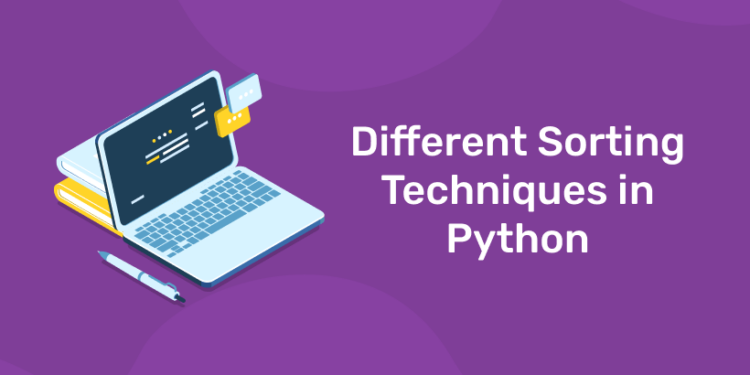Table of Contents
Guido Van Rossum designed Python in the late 1980s as an interpreted, interactive, object-oriented, and multi-purpose programming language. It is a programming language, that both humans and machines can understand. It is powerful and simple to use, making it ideal for novices. Python is a versatile programming language that can be used to develop simple applications as well as massive sophisticated programming solutions. It is widely used in web and internet development, mathematical and scientific computations of data, and gaming and graphics development. Python is used by several famous websites, including YouTube, Instagram, Dropbox, and Pinterest. According to the Stack Overflow Developer Survey 2019, Python is the fourth most popular and fastest-growing programming language. Python is utilized by some of the world’s most well-known software companies, including Google, YouTube, Instagram, Netflix, Spotify, Quora, and many others.
“Ready to take your python skills to the next level? Sign up for a free demo today!”
Python is an interpreted language, which implies that programs are handed directly to the interpreter, which runs them directly, as opposed to compilers, which convert source code to machine code before running. Python is a free programming language that was created under an OSI-approved open-source license, making it free to use and distribute even for commercial purposes. Python code is portable, which means it will run on any platform that has the Python interpreter installed. Python’s coding style is basic and clear, making it simple to understand and learn. It employs fewer keywords than other programming languages such as C++ or Java. Because of its tidy and ordered code structure, developers frequently use it.
from novice to pro learn python programming course online !
Sorting in Python
1: Which of the following data types is immutable in Python?
Sorting is a fundamental building element upon which many other algorithms are built. It is related to several intriguing concepts that you may encounter during your programming career. Understanding how Python’s sorting algorithms function behind the scenes is a critical step toward designing correct and efficient algorithms that handle real-world issues. Sorting is one of computer science’s most extensively researched algorithms. There are numerous sorting implementations and applications available to help you make your code more efficient and effective. Sorting can be used to address a variety of problems, including:
- Searching: If the list is ordered, searching for an item on it is significantly faster.
- Selection: Sorted data makes it easier to select items from a list based on their relationship to the other elements. Finding the kth-largest or lowest value, or the list’s median value, for example, is significantly easier when the values are in ascending or descending order.
- Duplicates: When a list is sorted, it is much easier to find duplicate values.
- Distribution: When a list is sorted, analyzing the frequency distribution of items on the list is very rapid. Finding the element that appears the most or least frequently, for example, is pretty simple given a sorted list.
Are you aspiring for a booming career in IT? If YES, then dive in |
||
Full Stack Developer Course |
Python Programming Course |
Data Science and Machine Learning Course |
There are various ways to use sorting to save time and effort, from commercial applications to academic research and everything in between.
Different types of Sorting Techniques in Python
Sorting is defined as arranging data in a specific order. Sorting methods are used to arrange data (usually numerical) in ascending or decreasing order. It is a method for presenting data in a more understandable style. It is a vital branch of computer science. If the methods we use to sort the data are inefficient, sorting a huge amount of data can use a significant amount of computational resources. The algorithm’s efficiency is proportional to the number of objects traversed. A sophisticated sorting process may be more bother than it is worth for a tiny amount of data. On the other side, with bigger amounts of data, we want to maximize efficiency and speed. We will now go over the various types of sorting strategies available in Python.
1. Bubble Sort
Bubble Sort is a straightforward sorting algorithm. This sorting method compares two adjacent elements repeatedly and swaps them if they are out of order. It is often referred to as the sinking kind. It has an average and worst-case time complexity of O(n2) and best-case time complexity of O(n). Bubble sort can be viewed as a queue in which people organize themselves by trading places so that they all stand in ascending order of height. In other words, we compare two neighboring items to check if their order is incorrect, and if it is, we swap them.
2. Insertion Sort
This sorting algorithm keeps an always-sorted sub-array. Values from the unsorted section of the array are assigned to the appropriate position in the sorted section. In practice, it is more efficient than other algorithms such as selection sort or bubble sort. The Time-Complexity of Insertion Sort is O(n2) in the average and worst case, and O(n) in the best situation.
“Get hands-on with our python course – sign up for a free demo!”
3. Merge Sort
Merge sort is an extremely effective sorting method. It is based on the divide-and-conquer strategy, which is a powerful computational tool for solving difficult problems. To fully comprehend divide and conquer, you must first comprehend the concept of recursion. Recursion is the process of breaking a problem down into smaller subproblems until they are manageable. Recursion is typically expressed in programming by a function calling itself. The divide-and-conquer strategy divides the set of input values into two equal-sized pieces, sorts each half recursively, and then merges these two sorted portions into a single sorted list in the case of merge sort.
4. Quicksort
The Quicksort method, like merge sort, divides the input array into two lists, the first with little items and the second with large items, using the divide-and-conquer concept. The algorithm then recursively sorts both lists until the final list is completely sorted. Partitioning the list refers to dividing the input list. Quicksort begins by selecting a pivot element and then partitions the list around it, placing every smaller element in a low array and every larger element in a high array. Placing all elements from the low list to the left of the pivot and all elements from the high list to the right places the pivot exactly where it needs to be in the final sorted list.
5. Timsort
Because it combines the best of both worlds of insertion sort and merges sort, the Timsort algorithm is characterized as a hybrid sorting algorithm. Timsort is a Python community favorite since it was created in 2002 by Tim Peters to be used as the Python language’s standard sorting algorithm. The main advantage of Timsort is that it makes use of already-sorted bits available in most real-world datasets. These are referred to as natural runs. After that, the algorithm loops through the list, dividing the elements into runs and merging them into a single sorted list.
6. Selection Sort
This sorting algorithm selects the smallest element and sorts it in order. Bubble Sort takes up no more memory space. During the execution of this algorithm, two subarrays are maintained: the already sorted subarray and the remaining unsorted subarray. For each iteration of Selection Sort, the least element of the unsorted subarray is arranged in the sorted subarray. Selection Sort outperforms bubble sort in terms of efficiency. In the average, worst, and best scenarios, Sort has a Time-Complexity of O(n2).
“Experience the power of our web development course with a free demo – enroll now!”
Wrapping Up
Sorting is a must-have tool in any Pythonista’s arsenal. You can make a significant difference in your programming career if you understand the various sorting algorithms in Python and how to optimize their potential.
Related Articles
| Our Other Courses | ||
| MEP Course | Quantity Surveying Course | Montessori Teachers Training Course |
| Performance Marketing Course | Practical Accounting Course | Yoga Teachers Training Course |











